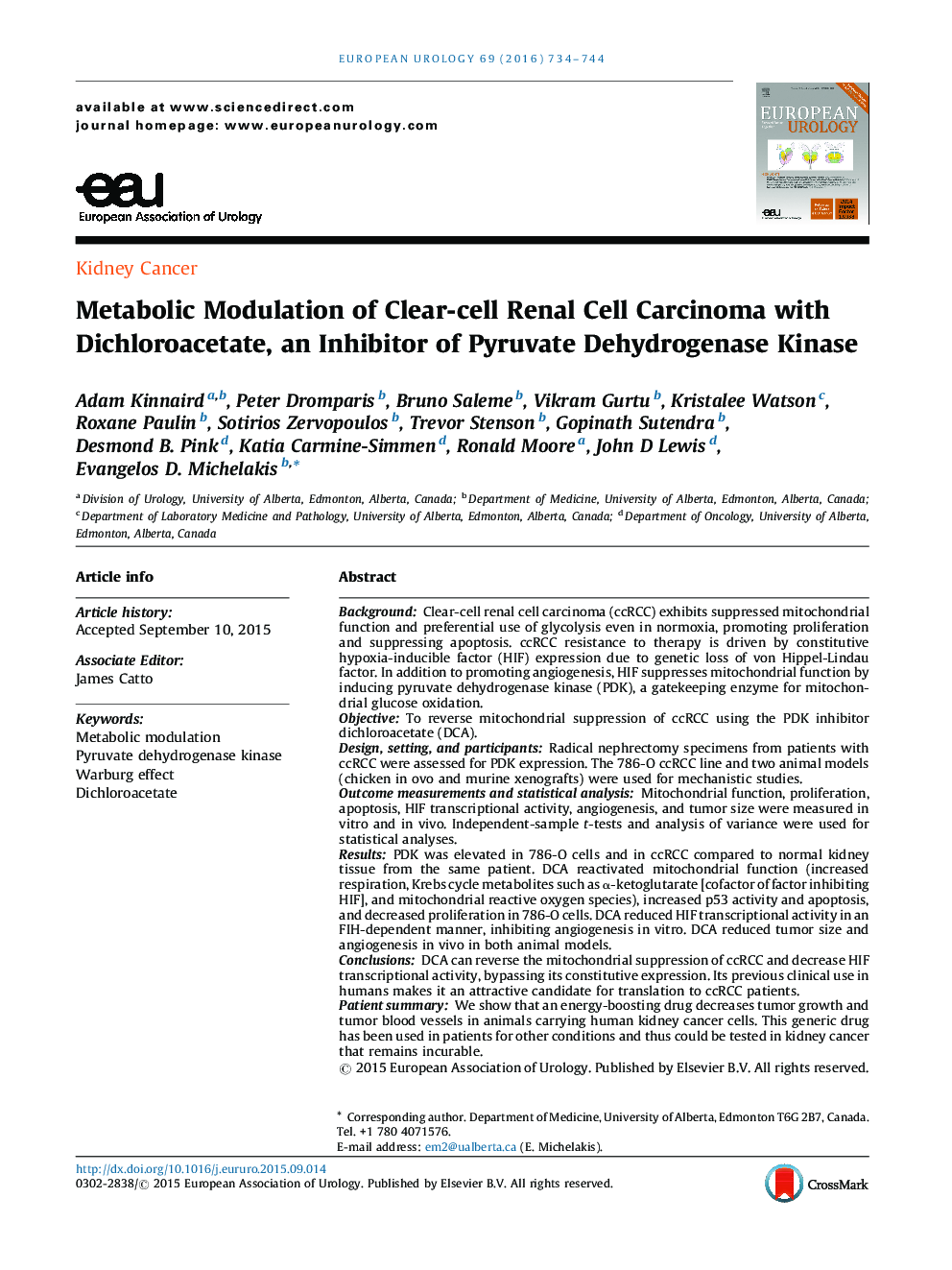| کد مقاله | کد نشریه | سال انتشار | مقاله انگلیسی | نسخه تمام متن |
|---|---|---|---|---|
| 6177561 | 1253103 | 2016 | 11 صفحه PDF | دانلود رایگان |
BackgroundClear-cell renal cell carcinoma (ccRCC) exhibits suppressed mitochondrial function and preferential use of glycolysis even in normoxia, promoting proliferation and suppressing apoptosis. ccRCC resistance to therapy is driven by constitutive hypoxia-inducible factor (HIF) expression due to genetic loss of von Hippel-Lindau factor. In addition to promoting angiogenesis, HIF suppresses mitochondrial function by inducing pyruvate dehydrogenase kinase (PDK), a gatekeeping enzyme for mitochondrial glucose oxidation.ObjectiveTo reverse mitochondrial suppression of ccRCC using the PDK inhibitor dichloroacetate (DCA).Design, setting, and participantsRadical nephrectomy specimens from patients with ccRCC were assessed for PDK expression. The 786-O ccRCC line and two animal models (chicken in ovo and murine xenografts) were used for mechanistic studies.Outcome measurements and statistical analysisMitochondrial function, proliferation, apoptosis, HIF transcriptional activity, angiogenesis, and tumor size were measured in vitro and in vivo. Independent-sample t-tests and analysis of variance were used for statistical analyses.ResultsPDK was elevated in 786-O cells and in ccRCC compared to normal kidney tissue from the same patient. DCA reactivated mitochondrial function (increased respiration, Krebs cycle metabolites such as α-ketoglutarate [cofactor of factor inhibiting HIF], and mitochondrial reactive oxygen species), increased p53 activity and apoptosis, and decreased proliferation in 786-O cells. DCA reduced HIF transcriptional activity in an FIH-dependent manner, inhibiting angiogenesis in vitro. DCA reduced tumor size and angiogenesis in vivo in both animal models.ConclusionsDCA can reverse the mitochondrial suppression of ccRCC and decrease HIF transcriptional activity, bypassing its constitutive expression. Its previous clinical use in humans makes it an attractive candidate for translation to ccRCC patients.Patient summaryWe show that an energy-boosting drug decreases tumor growth and tumor blood vessels in animals carrying human kidney cancer cells. This generic drug has been used in patients for other conditions and thus could be tested in kidney cancer that remains incurable.
Journal: European Urology - Volume 69, Issue 4, April 2016, Pages 734-744
